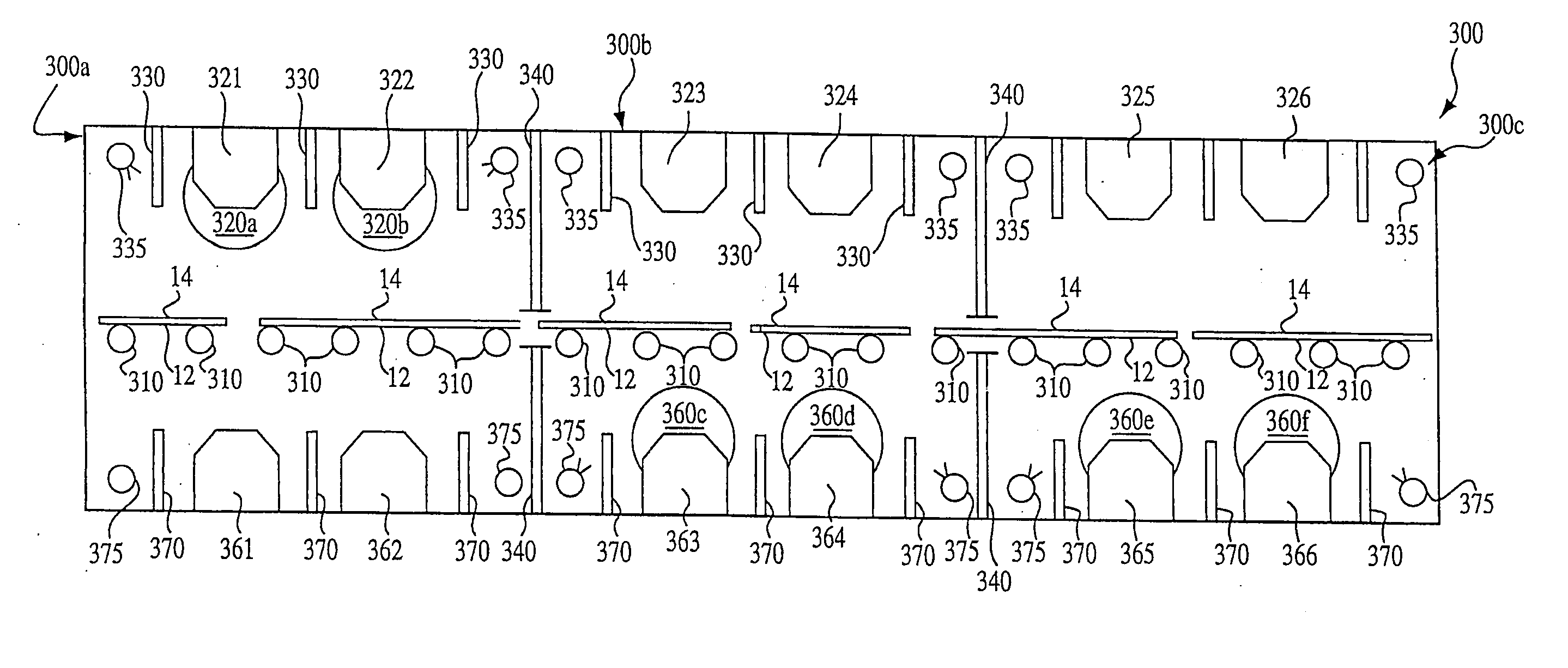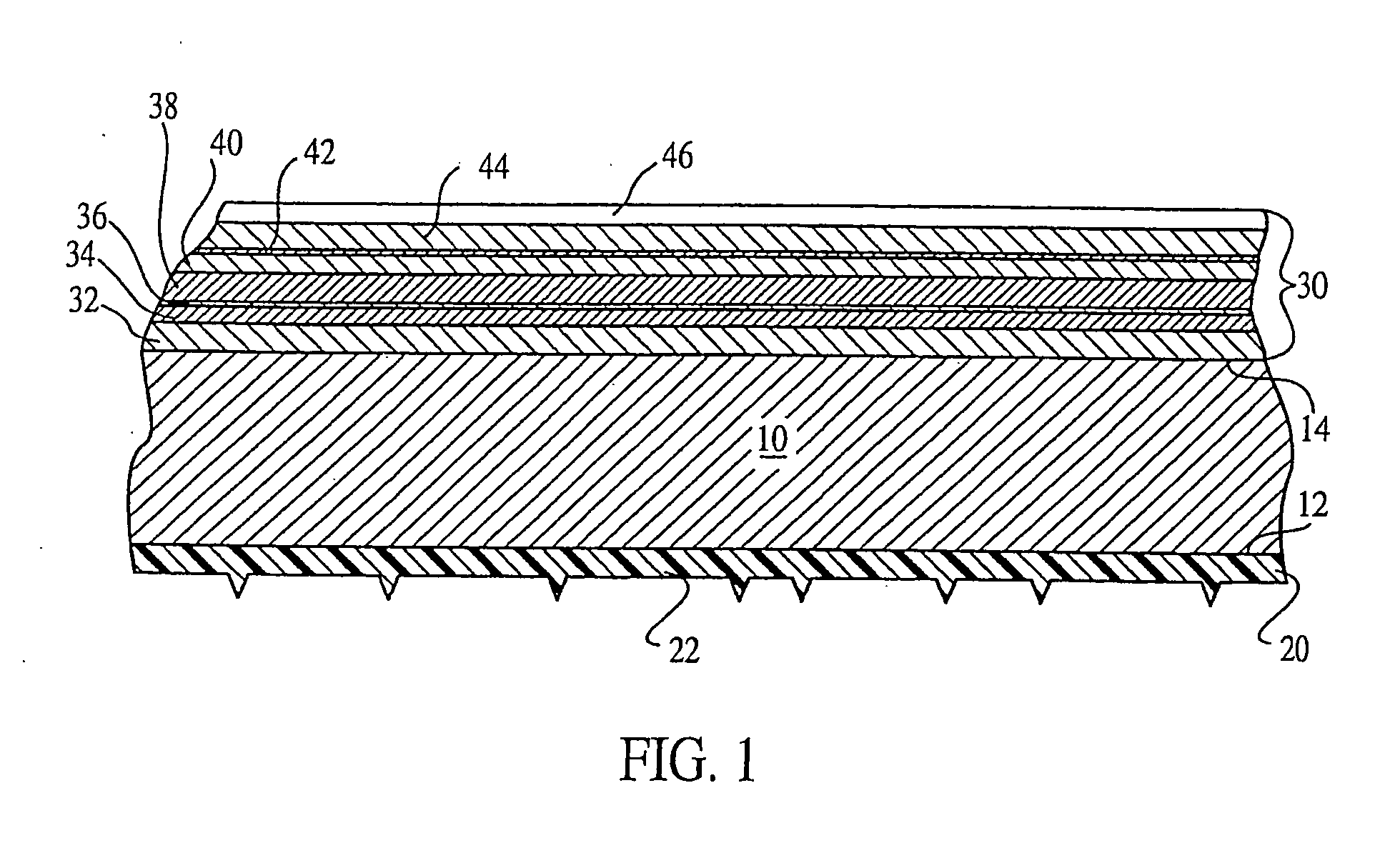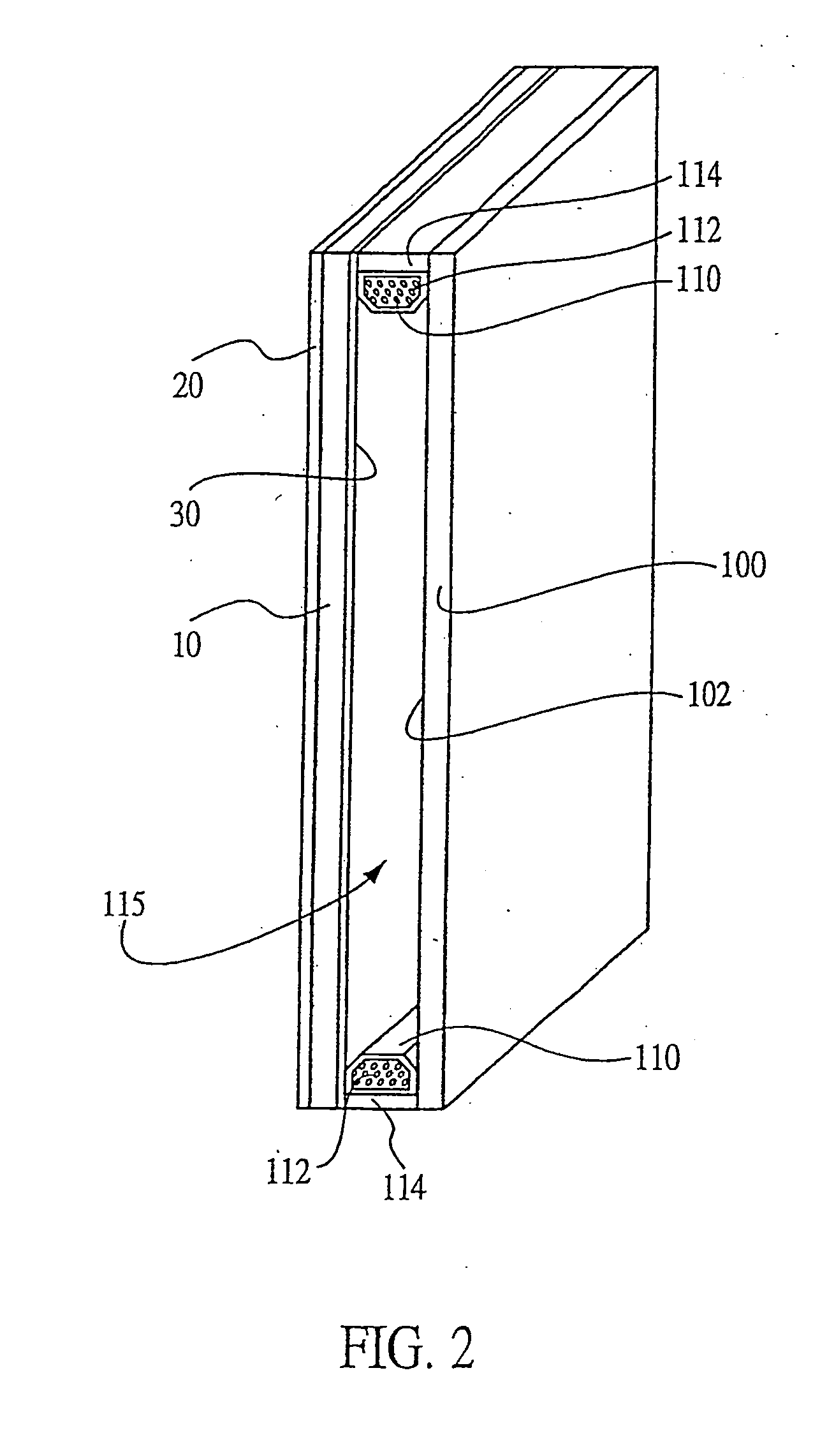Soil-resistant coating for glass surfaces
a technology of glass surface and soot-resistant coating, which is applied in the direction of vacuum evaporation coating, coating, transportation and packaging, etc., can solve the problems of a large number of windows being cleaned, a large amount of time and expense, and a large amount of windows being cleaned
- Summary
- Abstract
- Description
- Claims
- Application Information
AI Technical Summary
Benefits of technology
Problems solved by technology
Method used
Image
Examples
experimental example 1
[0085] Both of the samples were subjected to a salt spray test in accordance with ASTM B117 using a 5% salt solution for 250 hours. Briefly, the samples were cleaned and placed in a Singleton SCCH #20 Corrosion Cabinet at an angle of about 15-30° from vertical, with Sample B being oriented such that the surface bearing the water-sheeting coating 20 was oriented to face downwardly. A 5% salt solution (5 wt % sodium chloride, 95 wt % distilled water) was atomized in the cabinet at about 35° C. for 250 hours, with the salt solution being collected at a rate of about 1.8 ml per 80 cm per hour in the collection cylinders in the cabinet. Thereafter, the samples were removed from the cabinet, rinsed, allowed to dry and visually inspected. Sample A had more numerous water spots than did Sample B and the water spots on Sample A were more visible than the light streaks on Sample B.
[0086] Each sample was then cleaned using paper towels and Windex®. The haze of each sample was then measured us...
experimental example 2
[0088] Handling the samples with tongs, each sample was first dipped in a beaker of boiling tap water maintained at about 100° C. and held there for about 5 seconds, after which it was deposited in a beaker of ice water maintained at about 0° C. and held there for about 5 seconds. This process was repeated 25 times. The samples were then placed in a Singleton Model SL23 humidity test chamber maintained at about 90% relative humidity at about 120° F. (about 49° C.) for about 500 hours. Each sample was then visually inspected. As in Experimental Example 1, it was determined that Sample A exhibited more numerous and more visible water spots than did Sample B.
[0089] Each sample was then cleaned and the haze and contact angle measurements were taken in much the same manner outlined above in Experimental Example 1. The haze measurement for Sample A was 0.34% while that for Sample B was 0.14%. Sample A exhibited a contact angle of about 20° while the contact angle for Sample B was about 1...
experimental example 3
[0090] Two samples of uncoated glass (Samples A1 and A2) and two samples of coated glass (Samples B1 and B2) were cleaned and their haze measurements were taken. Each of the uncoated samples had haze measurements of about 0.09% while the haze measurement for the glass with a water-sheeting coating 20 was about 0.08%.
[0091] A cement mixture was prepared by mixing 4 ounces (about 11.5 g) of portland cement to 1000 ml of water. Two samples of uncoated glass (Samples A1 and A2) and two samples of coated glass (Samples B1 and B2) were held in this solution for about ten minutes then removed. Samples A1 and B1 were then rinsed liberally with water (but without any rubbing) and allowed to dry; Samples A2 and B2 were allowed to air dry without rinsing.
[0092] All four samples were hand cleaned using Windex® and paper towels. The residual soiling on Samples A1 and A2 from the cement test smeared during this cleaning, making it more difficult to clean the glass. In contrast, neither Samples ...
PUM
| Property | Measurement | Unit |
|---|---|---|
| Thickness | aaaaa | aaaaa |
Abstract
Description
Claims
Application Information
 Login to View More
Login to View More - R&D
- Intellectual Property
- Life Sciences
- Materials
- Tech Scout
- Unparalleled Data Quality
- Higher Quality Content
- 60% Fewer Hallucinations
Browse by: Latest US Patents, China's latest patents, Technical Efficacy Thesaurus, Application Domain, Technology Topic, Popular Technical Reports.
© 2025 PatSnap. All rights reserved.Legal|Privacy policy|Modern Slavery Act Transparency Statement|Sitemap|About US| Contact US: help@patsnap.com



